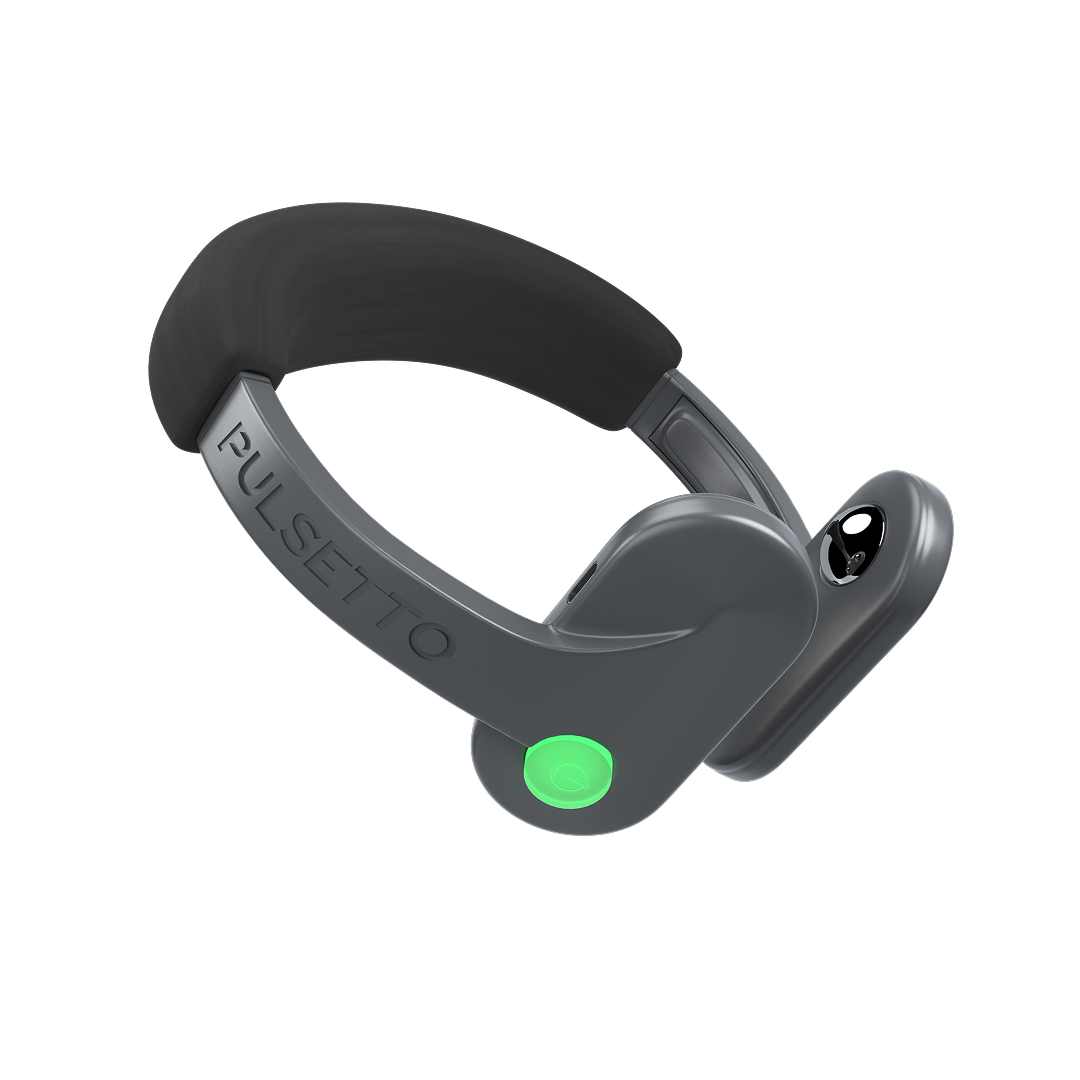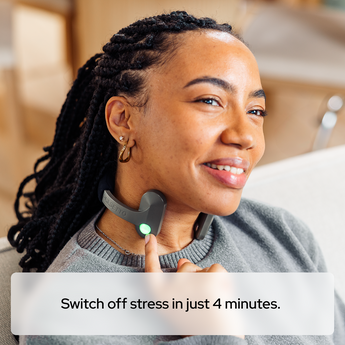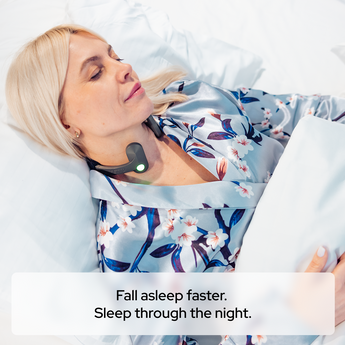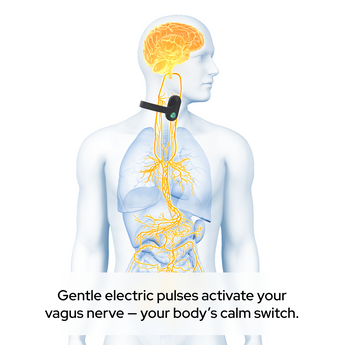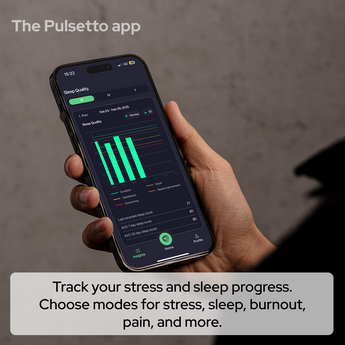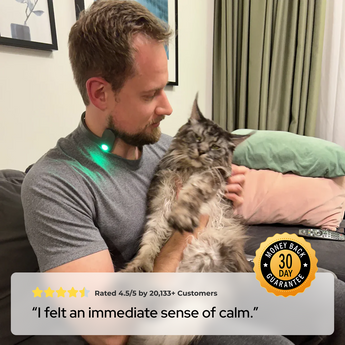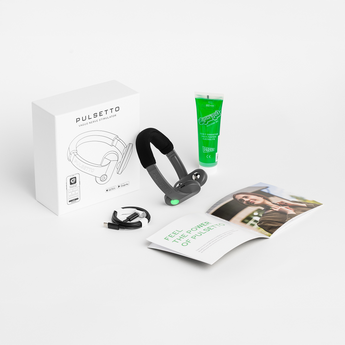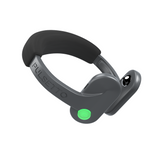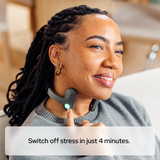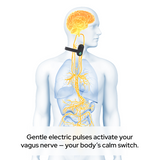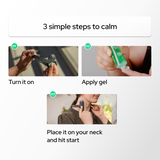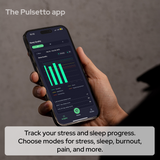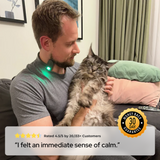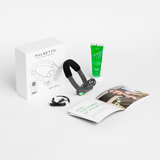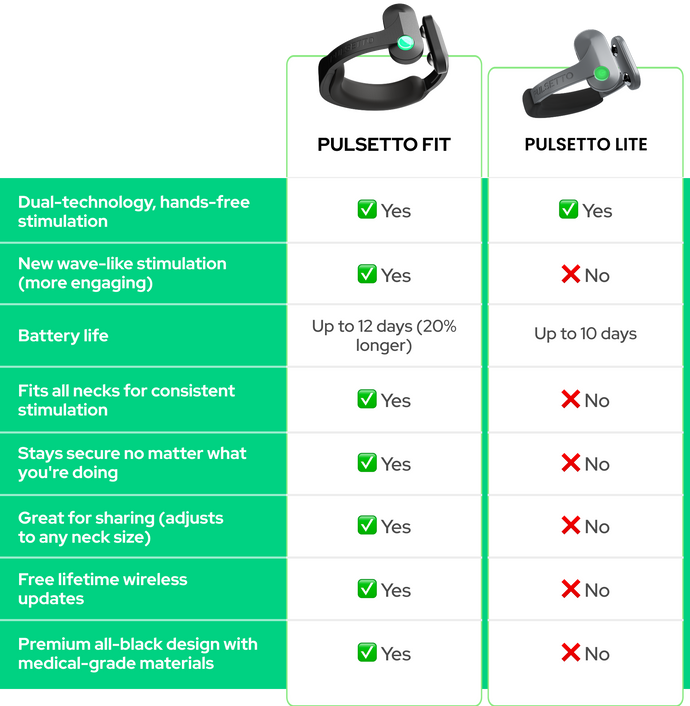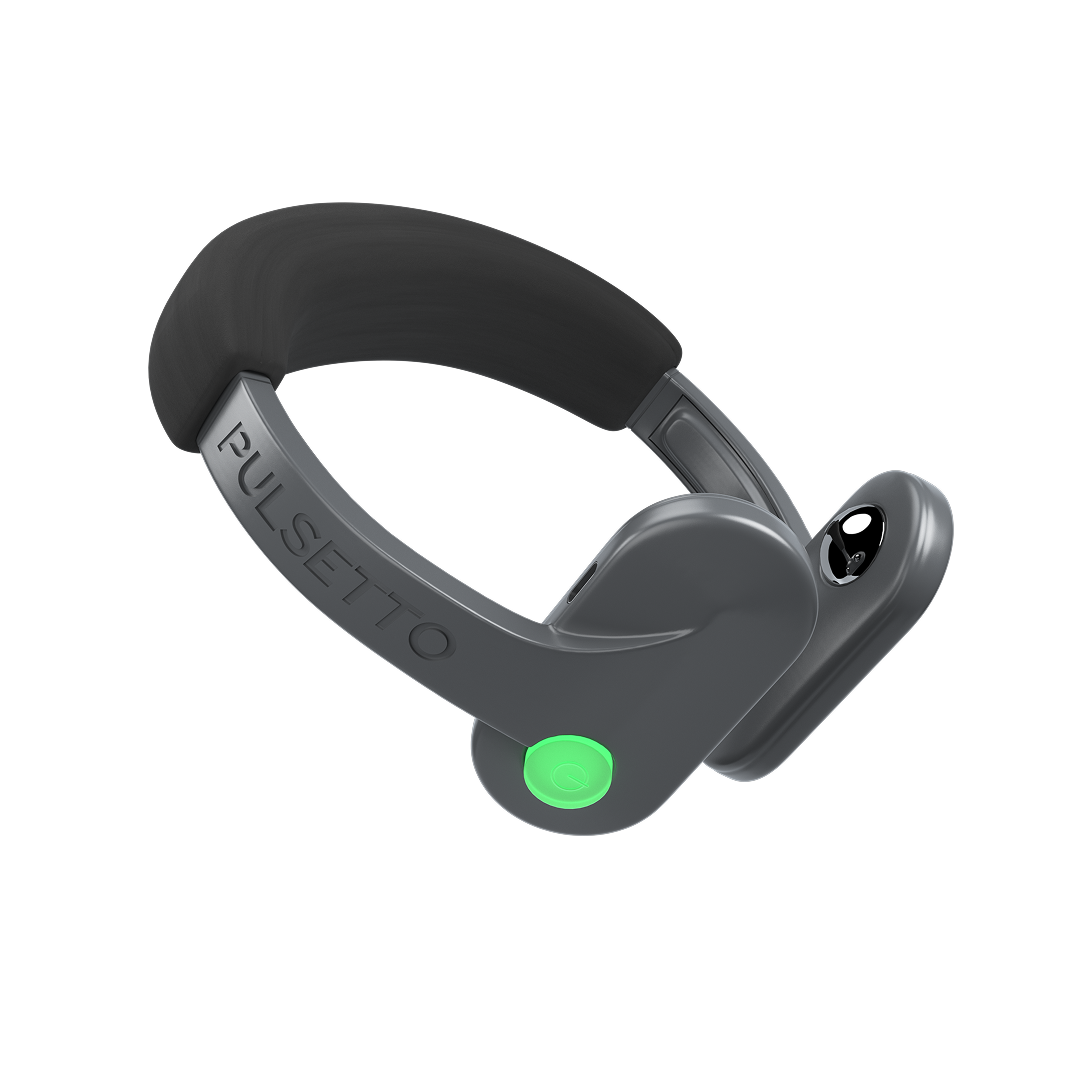|
Rank
|
Device
|
Description
|
|
2
|
Muse S Athena
|
InteraXon’s newest Muse S “Athena” combines EEG with fNIRS (blood-oxygen tracking) to give richer biofeedback than earlier Muse models. In practice, that means the headband can nudge you with real-time audio when your mind wanders, while also tracking cognitive effort and sleep quality. For meditators who like data, and coaches or clinicians who want at-home neurofeedback, Athena is the most advanced consumer meditation headband right now. It supports daytime meditation and overnight sleep tracking (with “Digital Sleeping Pills”), and reviews in 2025 highlight the value of dual-sensor feedback for staying present without staring at a screen. Setup is still simple: wear the band, pick a session, listen to soundscapes that change with your brain activity. Downsides: a learning curve if you’re new to neurofeedback and a higher price than simpler tools. If you want measurable progress and guided training, this is top-tier.
|
|
3
|
Sensate
|
Sensate is a pebble you rest on your chest; it pairs infrasonic vibrations with app soundscapes to “tone” the vagus nerve and settle the body fast. For people who struggle to sit still or who prefer somatic anchors over brain-data dashboards, Sensate’s simplicity is the appeal: lie down, press play, and let the resonance do the heavy lifting. Many users deploy it before breathwork or yoga nidra, and some report sleep improvements; brand and third-party reviews in 2025 describe quicker calm and an easier time staying with a session. It’s portable, screen-light, and friendly for beginners. Considerations: it’s not EEG, so you don’t get brainwave graphs, and results vary by sensitivity to vibration. If you like tactile grounding and want a quiet, eyes-closed ritual that’s easy to keep, Sensate is a great bridge into regular meditation.
|
|
4
|
Apollo Neuro
|
Apollo is a wrist/ankle wearable that uses patterned, gentle vibrations (“vibes”) to shift state, calm down, focus up, or wind down for sleep. It’s not a meditation coach per se; think of it as a background nervous-system tuner that makes your regular practice easier to enter and sustain. The 2025 iteration layers in smarter, time-of-day programs (e.g., evening SmartVibes) and app guidance. For restless minds, wearing Apollo during a session can reduce jitter and help you stay seated longer; many also use it to improve sleep, which amplifies meditation benefits. Pros: silent, screen-free, works while you work/walk, and plays nicely with breathwork or mantra practice. Cons: you won’t get EEG-style “you’re calm now” metrics, and the effect is subtle for some. If you want all-day support that carries into your cushion time, Apollo is a polished choice.
|
|
5
|
HeartMath Inner Balance Coherence Plus
|
HeartMath’s Coherence Plus is an HRV ear-sensor that trains “heart coherence”, a smooth heart-rhythm pattern correlated with calmer states. You breathe with on-screen pacing while the app turns your HRV into a real-time “coherence score,” making it easy to see (and feel) what settles you. For people who love breath-led practices or want a measurable way to warm up before sitting, Coherence Plus is superb: rapid feedback, simple visuals, and decades of research behind HRV biofeedback. The 2025 sensor upgrades sampling speed and connects via Bluetooth or USB-C (desktop/Android), and it works with HeartMath’s newer app experiences. Pros: quick wins, concrete numbers, and transferable skills (you’ll feel your breath syncing). Cons: it’s a clip + phone workflow (less “zero-effort” than a wearable), and there’s no EEG. If you want a proven way to make breath-meditation stick, start here.
|
|
6
|
Moonbird (breathing coach)
|
Moonbird is a palm-sized device that expands and contracts in your hand, physically pacing your inhale/exhale so you don’t need to watch a screen. It’s fantastic for anxious beginners or anyone who loses count, your hand literally “breathes.” In 2025 coverage, reviewers praise its portability (about the size of a small remote), tactile coaching, and impact on winding down at night. Use it for 4-7-8, box breathing, or coherent breathing before meditation; by the time you sit, your state is already settled. There’s no brain data, but the embodied cueing is powerful and screen-free. Pros: intuitive, kid-friendly, and perfect for travel. Cons: fewer advanced metrics compared to EEG/HRV tools. If you want a no-fuss way to create the breathing rhythm that underpins many meditation styles, Moonbird is a joy to use, and it meaningfully reduces “where do I start?” friction.
|
|
7
|
BrainTap (light & sound entrainment headset)
|
BrainTap pairs an app (large session library) with a visor/headset that uses synchronized audio and light to gently entrain brain states for relaxation, focus, or sleep. Think guided meditations plus photic entrainment in one flow. For users who like being “held” by rich sensory input rather than silent sits, BrainTap makes it easy to drop in quickly. In 2025 it remains popular in wellness clinics and at home; the pitch is faster state shifts and less mental effort. Pros: huge content catalog and an all-in-one ritual (close eyes, press play). Cons: it’s more expensive than app-only approaches and the evidence for light/sound entrainment varies; some may prefer quieter, non-stim methods. If music-plus-light helps you switch gears, BrainTap is a polished, immersive option that doubles as a pre-sleep routine.
|
|
8
|
Sens.ai (EEG + photobiomodulation + HRV)
|
Sens.ai is an ambitious headset that blends EEG neurofeedback, HRV coaching, and transcranial photobiomodulation (tPBM) in guided “missions.” The idea: measurable training for focus, calm, and sleep in 5–12-week programs, with real-time biomarkers and personalized thresholds. It’s aimed at serious self-trackers or coaching environments where structure matters. 2025 reviews highlight its feature density and data-rich sessions; setup is more involved than a simple wearable, but the all-in-one approach can replace multiple gadgets. Pros: comprehensive stack (EEG, HRV, tPBM), clear curricula. Cons: premium pricing and more gear management; as with all at-home neurotech, user response varies. If you want a lab-like platform for meditation + cognitive training without visiting a clinic, Sens.ai is one of the most complete systems you can buy in 2025.
|
|
9
|
Mendi (fNIRS neurofeedback headband)
|
Mendi uses fNIRS (near-infrared) sensors over the prefrontal cortex to visualize blood-oxygenation changes as you focus, then turns that into a simple game you control with attention and relaxed breathing. It’s approachable neurofeedback: no gel, quick sessions, and clear progress charts. For meditators who struggle with “am I doing it right?”, Mendi gives immediate, objective feedback that your focus and calm are improving. 2025 reviews describe better engagement for beginners and a low barrier to entry compared with multi-sensor rigs. Pros: lightweight, playful training, fair pricing. Cons: it’s focused on the PFC (not whole-head EEG), and content is less expansive than app-only meditation platforms. If you like quantified practice but want a simpler, screen-light start, Mendi is a friendly on-ramp to biofeedback-supported meditation.
|
|
10
|
Core by Hyperice (vibration-guided trainer)
|
Core is a handheld meditation trainer with gentle haptics that cue your breathing and attention while you listen to guided sessions in the app. The tactile pulsing makes it easier to keep rhythm without staring at a timer, and the library covers calm, focus, and sleep themes, use it as a warm-up before a silent sit or as your full practice. As of 2025, Hyperice still positions Core around making meditation habits stick, with dynamic vibration guidance and a sizable audio catalog. Pros: excellent for building consistency and for users who like something to hold; also less intimidating than head-mounted gear. Cons: you won’t get brain/HRV metrics, and it’s a dedicated device to carry. If you want supportive guidance and a physical anchor that teaches your body the pace of practice, Core is a solid, habit-forming companion.
|
|
11
|
Kasina DeepVision Bundle (light & sound mind machine)
|
The Kasina DeepVision Bundle combines ancient meditation principles with modern tech, using specialized eyewear and earphones to deliver over 40 pre-loaded sessions of light and sound stimulation for deep focus and peace. In 2025, it's praised for blending visual and auditory cues to maintain attention during meditation, with options to download more sessions for variety. Ideal for those who need sensory immersion to block distractions, it helps reduce anger, improve mood, and enhance awareness without recurring fees. Pros: interruption-free experience with eyewear that restricts light, one-time purchase for accessibility, supports mood elevation and yoga integration. Cons: more passive than interactive biofeedback tools, and setup might feel bulky for some. If you prefer guided, tech-enhanced rituals that feel like a personal soundscape journey, Kasina is an engaging way to deepen your practice in 2025.
|
|
12
|
Melomind (EEG relaxation headset)
|
Melomind is a headset with EEG sensors and pre-loaded sessions designed to reduce stress and promote serenity through neurofeedback-guided relaxation. Developed with scientific backing, it trains your brain to perceive calm states better, showing results in sleep quality, mood, and concentration from the first use. In 2025 reviews, users highlight its ability to prepare for high-pressure situations by building mental resilience during short sessions. Pros: quick noticeable relaxation, enhances memory and focus alongside meditation, includes a 30-day trial for risk-free testing. Cons: requires consistent use for optimal benefits, and it's app-dependent for tracking progress. For beginners or stressed professionals seeking a science-based tool to unwind and sharpen mental clarity, Melomind offers an effective, at-home path to mindfulness.
|
|
13
|
Unyte (biofeedback relaxation system)
|
Unyte is a self-regulation device that provides real-time biofeedback through interactive meditation journeys, helping users manage stress with guided rhythms and explorations. In 2025, it's valued for its diverse content, including body scans, peaceful games, and mindfulness sessions with experts, making it versatile for home practice. You clip the sensor and follow app cues for measurable calm, with options for annual or lifetime access. Pros: monitors relaxation state in real-time, offers immersive escapes like virtual villas or zen journeys, great for building emotional regulation skills. Cons: subscription model adds ongoing cost, and it's less portable than wearables. If you enjoy varied, game-like experiences to make meditation fun and trackable, Unyte bridges entertainment and wellness for sustained habits.
|
|
14
|
Dreamlight (sleep and anxiety mask)
|
Dreamlight is a line of eye-worn masks that use gentle heat, light-blocking, and mindfulness features to improve sleep and reduce anxiety, serving as a pre-meditation aid for better rest. In 2025, models like the heated version are award-winning for tackling insomnia and low productivity through simple, washable designs that promote relaxation. Pros: addresses depression and pressure with non-invasive warmth, user-friendly for nightly routines, enhances overall mindfulness by improving recovery. Cons: focused more on sleep than active meditation, and effects vary by individual sensitivity to heat. For those whose meditation suffers from poor sleep or high anxiety, Dreamlight provides a cozy, low-effort tool to create a calmer foundation in 2025.
|
|
15
|
Truvaga Plus (tcVNS neck stimulator)
|
Truvaga Plus is a transcutaneous cervical vagus nerve stimulation (tcVNS) device placed on the neck, delivering electrical pulses to promote calm and stress relief without a prescription. Backed by science similar to FDA-cleared options, it offers two-minute sessions via an intuitive app, guaranteed for years of use. In 2025, users report profound effects on focus, sleep, and mental responsivity. Pros: strong evidence for reducing psychiatric symptoms, HSA/FSA eligible, fast shipping and support. Cons: higher price point, not hands-free, potential connectivity issues. If you're seeking a research-supported VNS alternative to enhance meditation by quickly shifting to a restful state, Truvaga stands out for its reliability.
|
|
16
|
Xen by Neuvana (taVNS earphones)
|
Xen by Neuvana is a transcutaneous auricular vagus nerve stimulation (taVNS) device disguised as earphones, using customizable waveforms synced with music for hands-free relaxation. In 2025, its app allows over 200 combinations for tailored sessions targeting sleep, focus, and stress. Pros: highly adjustable intensity, comfortable itch-like sensation, low ongoing costs, 30-day guarantee. Cons: experimentation needed for best modes, shorter battery, higher intensities may feel unsafe for some. For music lovers who want to integrate VNS into daily listening or meditation, Xen offers subtle, personalized nervous system tuning.
|
|
17
|
VeRelief Prime by Hoolest (tcVNS handheld)
|
VeRelief Prime is a self-contained tcVNS device with pre-gelled tips and multiple modes for stress relief, no app required. In 2025, its respiratory-gated stimulation pairs well with breathing exercises, boosting mood and cognitive performance. Pros: easiest learning curve, soft modes for calm, 60-day guarantee, button-based simplicity. Cons: proprietary tips increase costs, some research claims overstated. Ideal for beginners wanting quick, no-fuss VNS to complement meditation without tech overload.
|
|
18
|
Emotiv (EEG brainwave tracker)
|
Emotiv is an EEG headset that measures brainwave activity to track mental states like relaxation or stress, providing feedback to refine meditation practices. In 2025, it's appreciated for helping users understand focus levels and reduce anxiety through data-driven insights. Pros: detailed brain state monitoring, improves emotional health, compatible with various apps. Cons: more complex setup than simple wearables, requires calibration. For data enthusiasts aiming to optimize mindfulness, Emotiv delivers objective metrics to make sessions more effective.
|
|
19
|
Lief (HRV biofeedback patch)
|
Lief is a discreet HRV biofeedback patch worn on the body, guiding relaxation techniques through real-time heart rate variability feedback to manage stress. In 2025, it supports emotional regulation by prompting breaths during high-stress moments, enhancing overall mental health. Pros: unobtrusive design, encourages healthy habits, integrates with daily life. Cons: patch-based, may require replacements. Perfect for on-the-go users who want subtle cues to deepen meditation and recovery.
|
|
20
|
EmbracePlus (stress detection wristband)
|
EmbracePlus is a wristband with advanced sensors for accurate stress detection, tracking physiological signals to provide insights and alerts. In 2025, its improved accuracy aids in managing anxiety and promoting relaxation through timely interventions. Pros: real-time stress spikes notifications, supports mindfulness breaks, comfortable wear. Cons: focused on monitoring over active training. If you need a wearable that flags stress for proactive meditation, EmbracePlus keeps you aware and balanced.
|
|
21
|
Circular Ring 2 (smart health ring)
|
Circular Ring 2 is a smart ring with PPG and ECG sensors for tracking heart rhythm, HRV, and activity, offering AI-personalized insights via app. In 2025, its long battery life and recommendations make it great for recovery and mindfulness. Pros: discreet, AI-driven advice, up to 8 days battery. Cons: higher cost, app-dependent. For subtle all-day monitoring that informs better meditation timing, it's a sleek choice.
|
|
22
|
Narbis Neurofeedback Smart Glasses (EEG attention trainer)
|
Narbis uses EEG in smart glasses that tint lenses based on focus levels, providing real-time feedback to improve attention during meditation. In 2025, it's effective for ADHD-like symptoms, boosting concentration and calm. Pros: playful engagement index, helps build focus habits. Cons: glasses form factor may not suit all. Ideal for visual learners seeking neurofeedback without a full headset.
|
|
23
|
NeuroVIZR (audiovisual entrainment device)
|
NeuroVIZR is a portable light and sound device for brain entrainment, guiding sessions to enhance relaxation and cognitive flexibility. In 2025, studies show high sleep induction and reduced stress. Pros: app-guided, quick sessions, portable. Cons: sensory-intensive, not for light-sensitive users. For immersive state shifts before meditation, it's a innovative tool.
|
|
24
|
Ozlo Sleepbuds (noise-masking earbuds)
|
Ozlo Sleepbuds are wireless earbuds with sleep sounds and noise-masking to improve rest, indirectly supporting daytime meditation through better recovery. In 2025, their long playback and timers aid wind-down routines. Pros: comfortable for sleep, user-tested features. Cons: focused on night use, no biofeedback. Great for insomniacs needing restful foundations for mindfulness.
|
|
25
|
Neurable MW75 Neuro headphones (EEG focus tracker)
|
Neurable MW75 integrates EEG into headphones to track focus, providing scores and break prompts during listening or meditation. In 2025, it extends attention spans and raises awareness of drifts. Pros: combines audio with neurofeedback, longer focus streaks. Cons: premium price, requires app. For multitaskers blending music and mindfulness, it's a smart audio upgrade.
|




